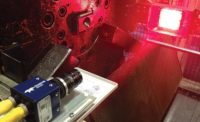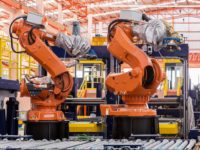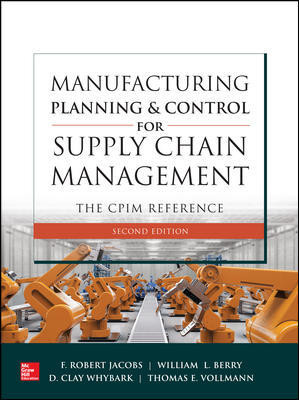Embedded vision for manufacturing: The benefits of choosing smart cameras
Manufacturers who choose embedded vision for their application will find, in most cases, that the process for setting up the camera is simpler than setting up a traditional pc-based system.

The use of embedded vision will continue to grow rapidly as manufacturers look for economical solutions for automation and machine vision.

Assembly verification is shown here.

Assembly verification is shown here.



Embedded vision is a term that means slightly different things to different people. When it comes to manufacturers using machine vision for automation and other applications, embedded vision generally refers to smart cameras or smart systems. A smart camera or embedded vision system is a device that is both a camera and a computer. In embedded vision, all the processing of images happens on the camera. In traditional PC-based vision systems, a “dumb” camera sends images to a PC, and the PC processes and analyzes the images. Embedded vision trades the complexity and flexibility of a PC-based system for simplicity and compactness, and these traits make it a very useful technology for a growing list of manufacturing applications that involve inspection, sorting or picking.
The use of embedded vision continues to grow as the technology advances. For many applications, embedded vision systems are faster to set up, easier to program, and easier to replace if they fail. Depending on the application, a smart camera can cost less than a PC-based system. Embedded vision systems also have the ability to handle some harsh conditions better than traditional machine vision systems. Because of all these benefits, manufacturers are choosing smart cameras for their applications more than ever before.
Embedded vision systems deliver ease of use
Manufacturers who choose embedded vision for their application will find, in most cases, that the process for setting up the camera is simpler than setting up a traditional PC-based system. Smart cameras are complete, self-contained systems. The camera can be put into place, connected to the network, and, with relatively little effort, set to work.
Most smart camera manufacturers have designed these products with an intuitive user interface that enables a moderately technical person to configure the camera in pretty short order. More complex PC-based systems generally require the help of a programmer to write code for the application. That can take more time and cost more money.
Most manufacturing floors have staff on site who are more than capable of setting up a smart camera. These systems aren’t toys, and it wouldn’t be accurate to say “anyone can do it.” However, most smart cameras have easy-to-use, drag-and-drop interfaces that a mechanical engineer, motion control engineer, or other person on the factory floor will find to be straightforward. Using the talents of staff on hand to set up a smart camera saves time, because they are already on site, and saves money because there is no need to hire a programmer to write code to set the system up.
Along the same lines, if a smart camera gets damaged or needs replacement, it is a lot easier, faster, and cheaper to swap it out than if a PC-based machine vision system fails. If a smart camera gets whacked by a robot or experiences some other kind of mishap, it can easily be replaced by unplugging it, uploading the software onto a new camera and plugging the new camera into the network. Again, no programmer needed. Replacing the self-contained smart camera is a lot less involved than replacing a traditional machine vision system that includes a PC and camera—or multiple cameras. Using a smart camera can help limit downtime caused by mishaps or failures, and can get a machine vision system up and running again quickly.
Lower cost technology makes embedded vision systems a good choice for many manufacturers
One of the major benefits of embedded vision systems is that they tend to be cheaper than PC-based systems. A single smart camera is less expensive than a PC-based system that includes a PC and one “dumb” camera.
However, cost considerations can be complicated. An application that includes one PC and six “dumb” cameras may be more economical than six smart cameras. And while a single smart camera may cost less, that intuitive, easy-to-use interface may not have the complexity needed to achieve the goal of the application. Sometimes manufacturers have more complex programming requirements, and in that case, a PC-based system is a must.
That raises another interesting situation with regards to embedded vision systems. Today’s smart cameras are designed to be easier to deploy and operate, so that users don’t need to hire programmers to write code to set a machine vision system up. However, as smart camera technology has progressed, users have requested more complexity, and camera makers face competing demands of providing a product that is user-friendly and simple to operate while also delivering a solution with increasing complexity and flexibility. Camera makers continue to try to meet this challenge by designing smart cameras that are ever more flexible, while still being intuitive enough to be deployed without the help of a programmer.
Embedded vision systems can be combined with PC-based vision in some applications
In some instances, manufacturers will use both PC-based vision systems and embedded vision. For example, when it comes to web applications, like the inspection of paper production, a PC-based system is usually required. Web applications generally call for line scan cameras, and smart cameras generally are not line scan cameras. So a manufacturer may have a PC-based system monitoring the production of paper for defects as it scrolls by, but they may also have a smart camera further down the line, monitoring the packaging of paper rolls, to ensure the correct number of rolls goes into each package.
Embedded vision is ideal for some harsh conditions
Because embedded vision systems are enclosed, self-contained cameras, they are ideal for applications in environments that may feature less-than-ideal conditions. For instance, a meat processing application will have a line that needs to be hosed down regularly for sanitary reasons. While the camera itself would not be hosed down, it would undoubtedly be hit with some spray from the cleanup. Because smart cameras are enclosed in water-tight cases, they can easily withstand this kind of abuse, which would destroy a traditional camera.
Another example of conditions ideal for embedded vision is a situation where there may be a lot of dust in the atmosphere. Dust is problematic for machine vision because, if dust gets on the lens of a camera, it will interfere with the images the camera acquires. In dusty environments, a fan is often trained on a camera lens to keep it clear. This is problematic for a traditional camera because the fan is likely to propel troublesome dust inside of the camera housing to wreak havoc. Because smart cameras are enclosed in air tight cases, they are not susceptible to dust infiltrating the internal workings, and, therefore, are a better option for applications that take place in dusty conditions.
The future of embedded vision systems for manufacturing applications
Embedded vision systems are helping manufacturers make automation happen by making it less costly, easier to deploy and less complicated to operate. Expect the technology behind embedded vision to continue to evolve to make these systems faster, cheaper and more flexible as time goes by.
In spite of that inevitable technology advance, don’t expect smart cameras to completely displace PC-based systems. Traditional machine vision systems technology will also continue to evolve, and will likely always be a few steps ahead of embedded vision systems technology. Nevertheless, the use of embedded vision will continue to grow rapidly as manufacturers look for economical solutions for automation and machine vision.
Looking for a reprint of this article?
From high-res PDFs to custom plaques, order your copy today!












